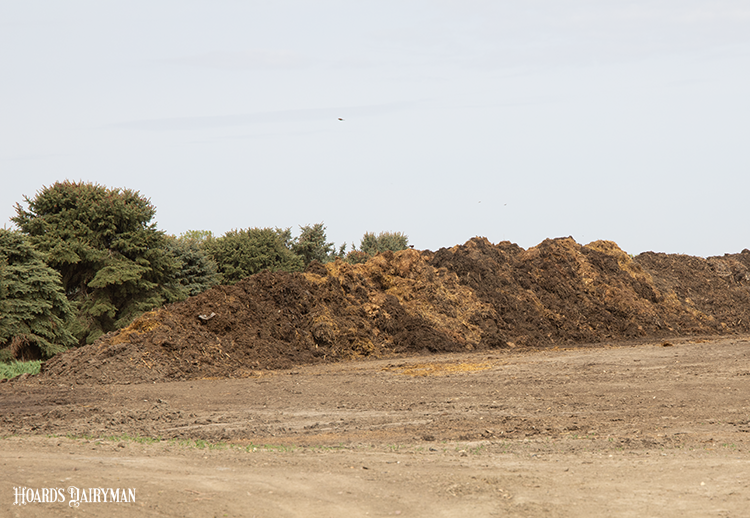
Making compost on a dairy may be a useful way to dispose of manure solids or mortalities while recycling them into a fertilizer. There are a few key principles that must be considered to make compost successfully, but with the right plan, it can be a fairly easy tool to use.
The first step must be to select an appropriate site. Brian Dougherty, a field ag engineer with Iowa State University, explained in a webinar that it is crucial to pick a site that is easy to access year-round. You will want to minimize machinery movement and traffic but be sure the necessary equipment has room to operate. Select a site that also has access to storage for the compost feedstock and finished piles.
Drainage is another crucial consideration to avoid water contamination. Dougherty advised choosing a dry location with a slight (2% to 4%) slope. A grade over 6% may cause too much runoff, he said. Construct windrows parallel to the slope.
He also noted that a concrete pad can be used, but packed gravel or soil can work well, too. The main concern is having a way to capture any leachate and divert it away from groundwater, the engineer continued. Be sure to consider seasonal changes in water, like snow piles in winter.
Build it right
Once you have your site selected and are ready to begin composting, consider a few best practices before you begin so you can make the process go safely and effectively.
If it’s manure you want to compost, recognize that it will need to be handled as a solid material. Of liquid slurry, Dougherty said, “It’s going to take way too much carbon to soak up all of that material.” This means a bedded pack is a good option for composting, or the manure solids can be separated. However, be sure to remove any sand bedding, too. Compost must be comprised of organic material for decomposition to occur.
Manure will typically be composted in windrows, and while Dougherty said there are no hard and fast rules about size, a typical recommendation is 8 to 16 feet wide and half as tall. Inspect the piles regularly, check the temperature, and turn to aerate when necessary. He said that most piles will reach 110°F within five days. The goal is to maintain it at 130°F to 150°F.
When done well, composting manure can cut its volume 50% to 70%, Dougherty said. This creates a quality, organic soil amendment while reducing bulk, odor, and fly problems. The process also kills pathogens and deactivates weed seeds.
A similar process can be used to compost mortalities, which is often easier and safer than using a rendering service or burying carcasses, Dougherty continued. In these situations, the pile is simply built a bit differently than with manure. It is critical to have a base of 18 to 24 inches of carbon material such as wood chips or corn stover, which will absorb water as the carcass decomposes. Dougherty explained that the base is also critical to allow oxygen into the pile.
Then, add more material on top of the carcass. “This is a great place if you’ve got some bedded pack manure or spoiled silage or feedbunk refusals,” said Dougherty. Finally, add a cap of material to prevent scavenging. “You want a minimum of 18 inches, and preferably 24 inches, of material all the way around that carcass,” Dougherty summarized.
No matter what you are composting, check the regulations in your area and choose a location that will avoid runoff. When a pile is built right, you will be just fine, Dougherty said. His advice is to start small and get more comfortable as you learn the process.








